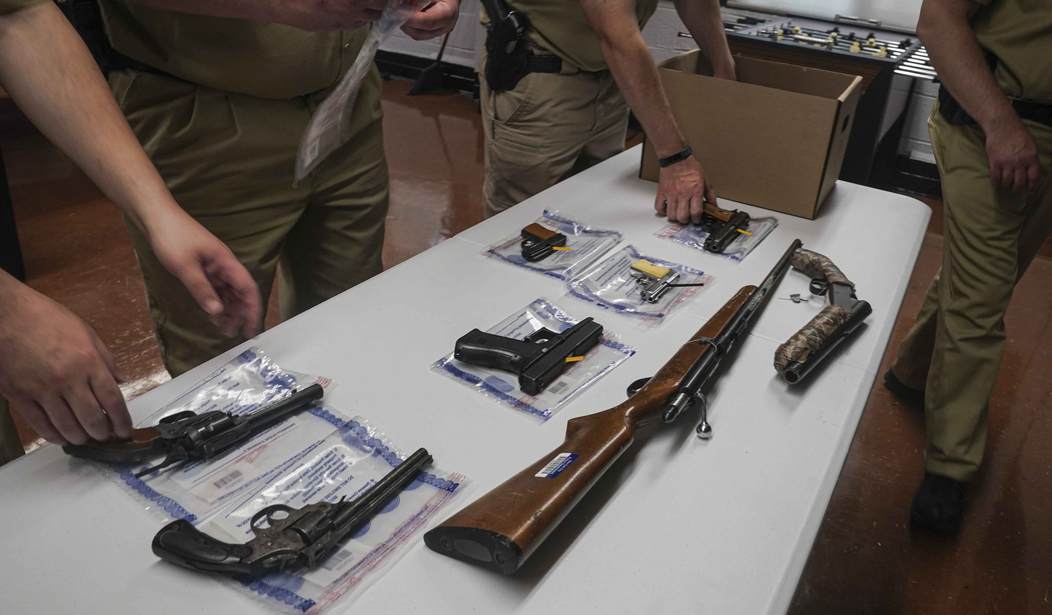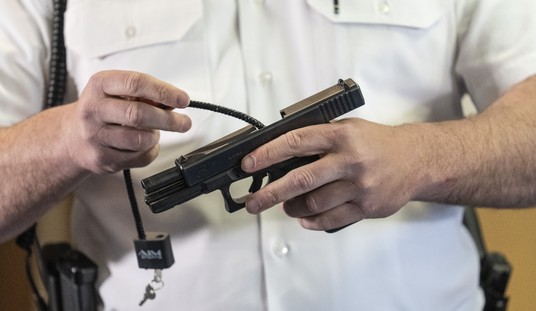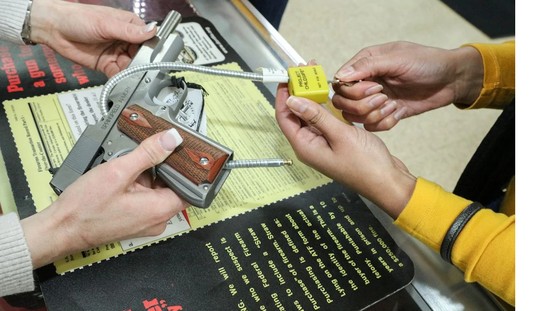California Attorney General Rob Bonta is not-so-subtly lobbying the Supreme Court ahead of its decision in U.S. v. Rahimi, which deals with the constitutionality of prohibiting the subject of a domestic violence restraining order from lawfully possessing firearms. While this isn't a case that involves "red flag" laws, at a press conference in Sacramento this week Bonta invoked the state's Extreme Risk Protection Order statute and more than a half-dozen other protective orders while expressing his concern about the pending decision.
Ahead of a major U.S. Supreme Court decision that could reshape governments’ ability to control residents’ access to firearms, California Attorney General Rob Bonta had a clear message: “Protective orders save lives.”
He spoke Thursday at a press conference in Sacramento to tout a newly released report, which showed the number of protective orders issued in California to limit access to firearms for people deemed dangerous increased by 20% between 2020 and 2023.
California has nine types of protective orders, including domestic violence, elder violence, civil harassment, workplace violence and postsecondary school violence restraining orders. They allow different groups of people to petition a court to temporarily remove guns from a person’s home and bar them from buying new ones if that person presents a danger to others.
The orders can range from one day to several years.
Note what Bonta actually bragged about: more temporary bans on gun ownership being issued, not a reduction in gun deaths. As Gun Owners of California's Sam Paredes points out, that's because those numbers are heading in the wrong direction.
Paredes took issue with Bonta’s characterization that the prevention orders stop gun deaths. According to the Centers for Disease Control and Prevention, California’s firearm mortality rate increased by 16% between 2014 and 2022, from 7.4 deaths per 100,000 residents to 8.6 deaths. California’s law legalizing gun violence restraining orders — the first of its kind in the country — went into effect in 2016.
Parades said there’s no evidence the gun violence restraining orders, or any prevention orders, have had any effect on reducing gun deaths.
“It’s not possible for them to prove that,” he said. “The fact that they’ve issued these protective orders does not mean that they have prevented something from happening.”
When the gun control lobby started pushing for "red flag" laws across the country close to a decade ago, they tended to describe their use like Democrats used to talk about abortion in the 1990s; something that should be safe, legal, and rare. But in the years since Democrats and their anti-gun allies have pushed hard to broaden the use of ERPOs; expanding the universe of people who can petition the courts for a "red flag" order, and in some cases (looking at you, Gov. Kathy Hochul) mandating a "red flag" petition be filed by the state police in every conceivable opportunity.
As Paredes points out, there's really no way to prove the effectiveness of "red flag" laws, so the only real metric that anti-gun politicians like Bonta can point to are the number of petitions that have been granted. A rarely-used statute doesn't benefit the anti-gunners, so they have a vested interest in making it as easy as possible to file a "red flag" petition, and to make it as hard as possible to defend yourself against one.
So what if gun-involved deaths continue to climb? As far as the gun control lobby is concerned, that's just evidence of the need for even more restrictions on the Second Amendment. It's not like Democrats in Sacramento are going to admit their decades-long quest to kill off the right to keep and bear arms has been an unmitigated disaster after looking at the statistics. They'll double down on their anti-gun efforts, and yet again it will be responsible gun owners who pay the price.









Join the conversation as a VIP Member